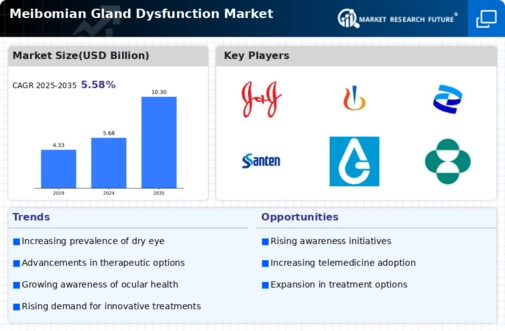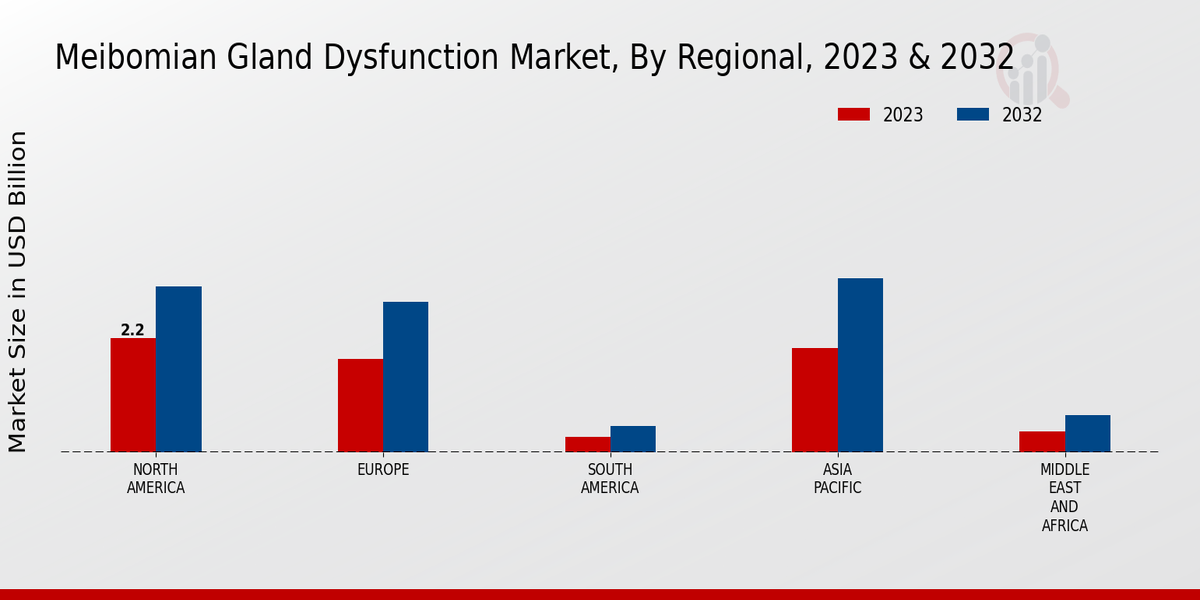Meibomian Gland Dysfunction Market Summary
The Global Meibomian Gland Dysfunction Market is projected to grow from 5.68 USD Billion in 2024 to 10.33 USD Billion by 2035, reflecting a robust CAGR of 5.59%.
Key Market Trends & Highlights
Meibomian Gland Dysfunction Key Trends and Highlights
- The market valuation is expected to reach 10.33 USD Billion by 2035, indicating substantial growth opportunities.
- From 2025 to 2035, the market is anticipated to expand at a CAGR of 5.59%, highlighting a steady increase in demand.
- in 2024, the market is valued at 5.68 USD Billion, laying a strong foundation for future growth.
- Growing adoption of innovative treatment options due to increasing awareness of Meibomian Gland Dysfunction is a major market driver.
Market Size & Forecast
| 2024 Market Size | 5.68 (USD Billion) |
| 2035 Market Size | 10.33 (USD Billion) |
| CAGR (2025-2035) | 5.58% |
Major Players
Johnson & Johnson Vision, Novartis, Roche Holdings, Pfizer, Shimer, Allergan, Sun Pharmaceutical Industries, Valeant Pharmaceuticals, Santen Pharmaceutical, TearLab, Merck, Regeneron, BVI Medical, EyeGate Pharmaceuticals, Bausch + Lomb



















